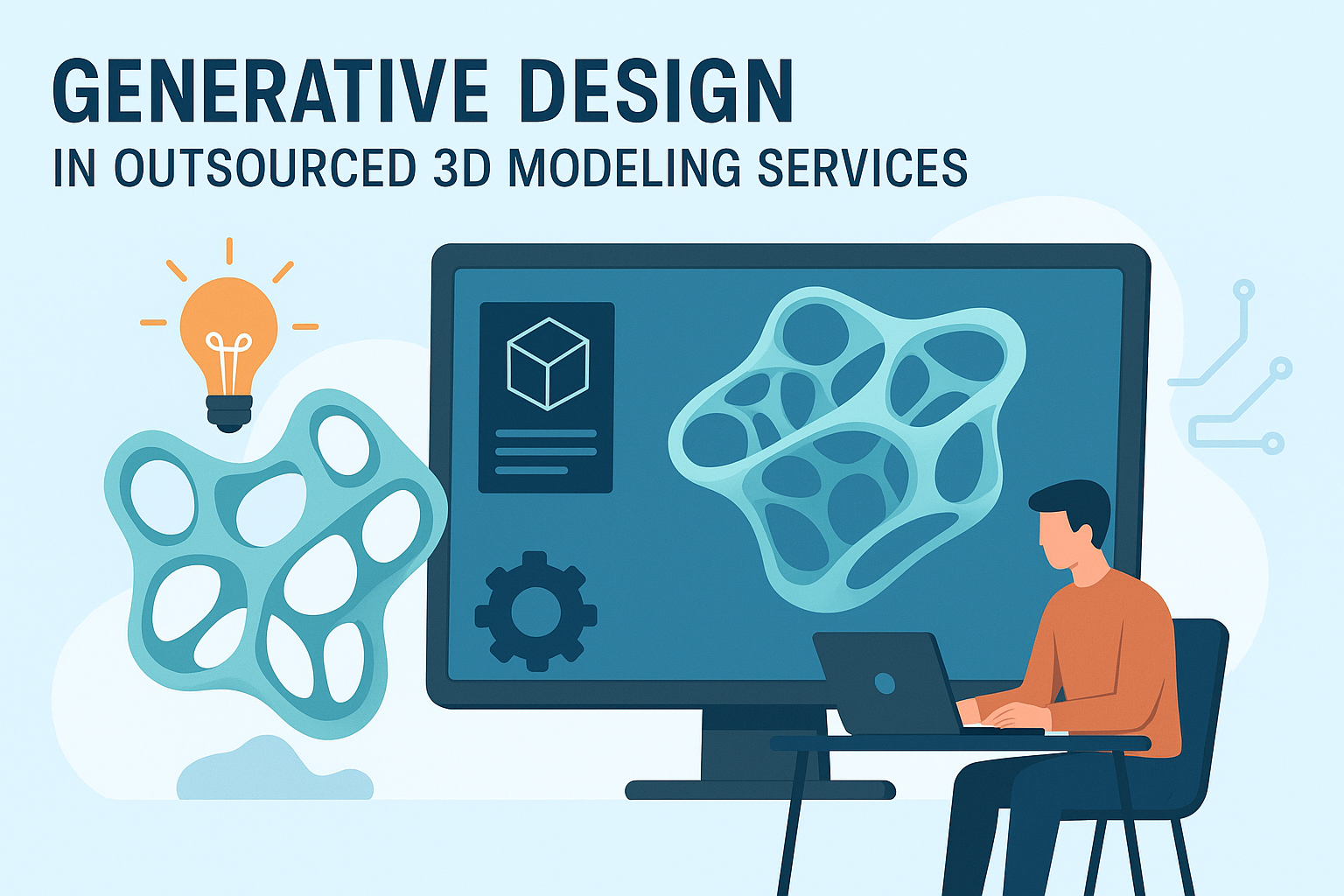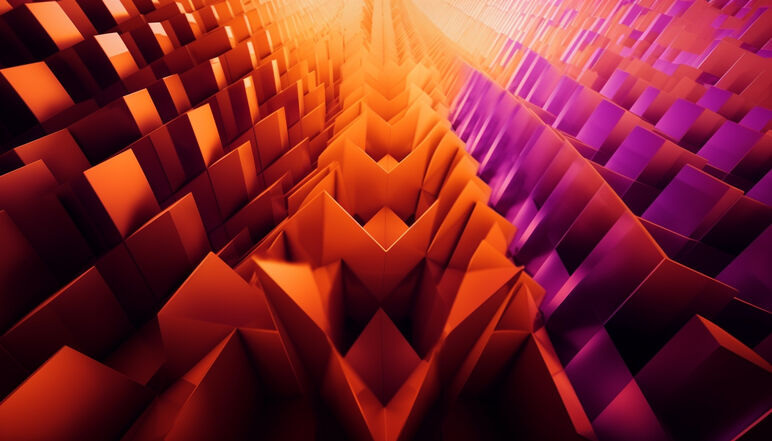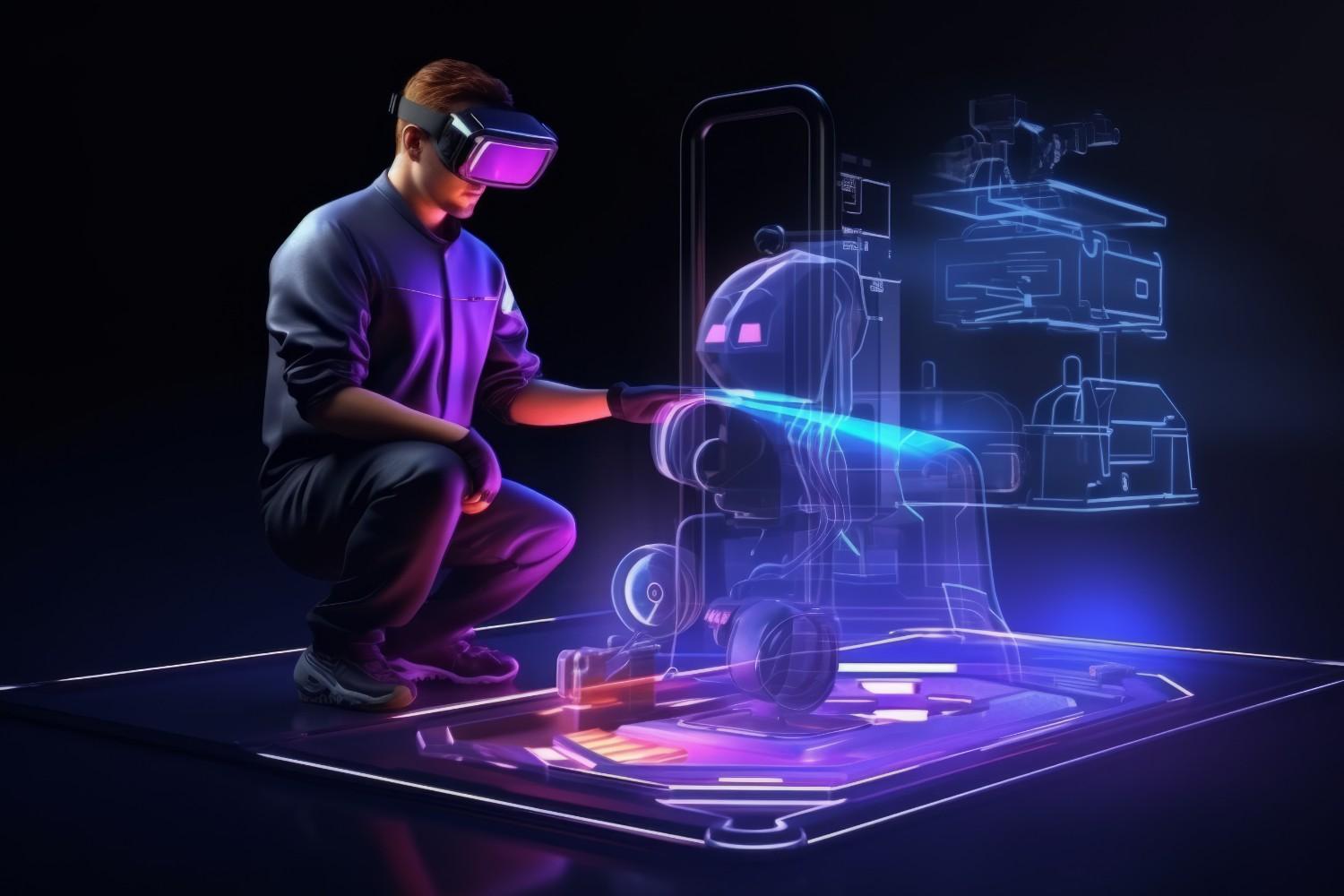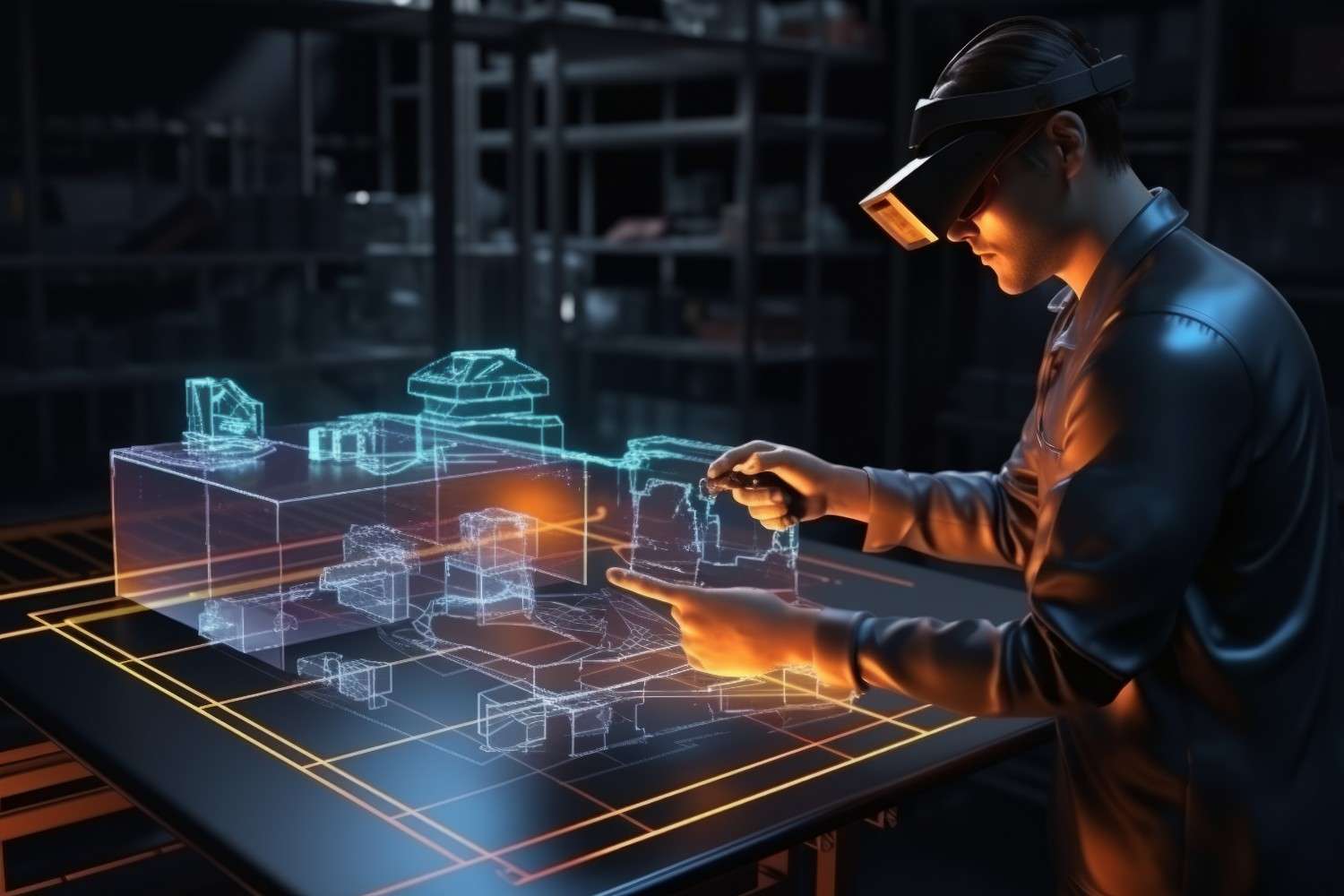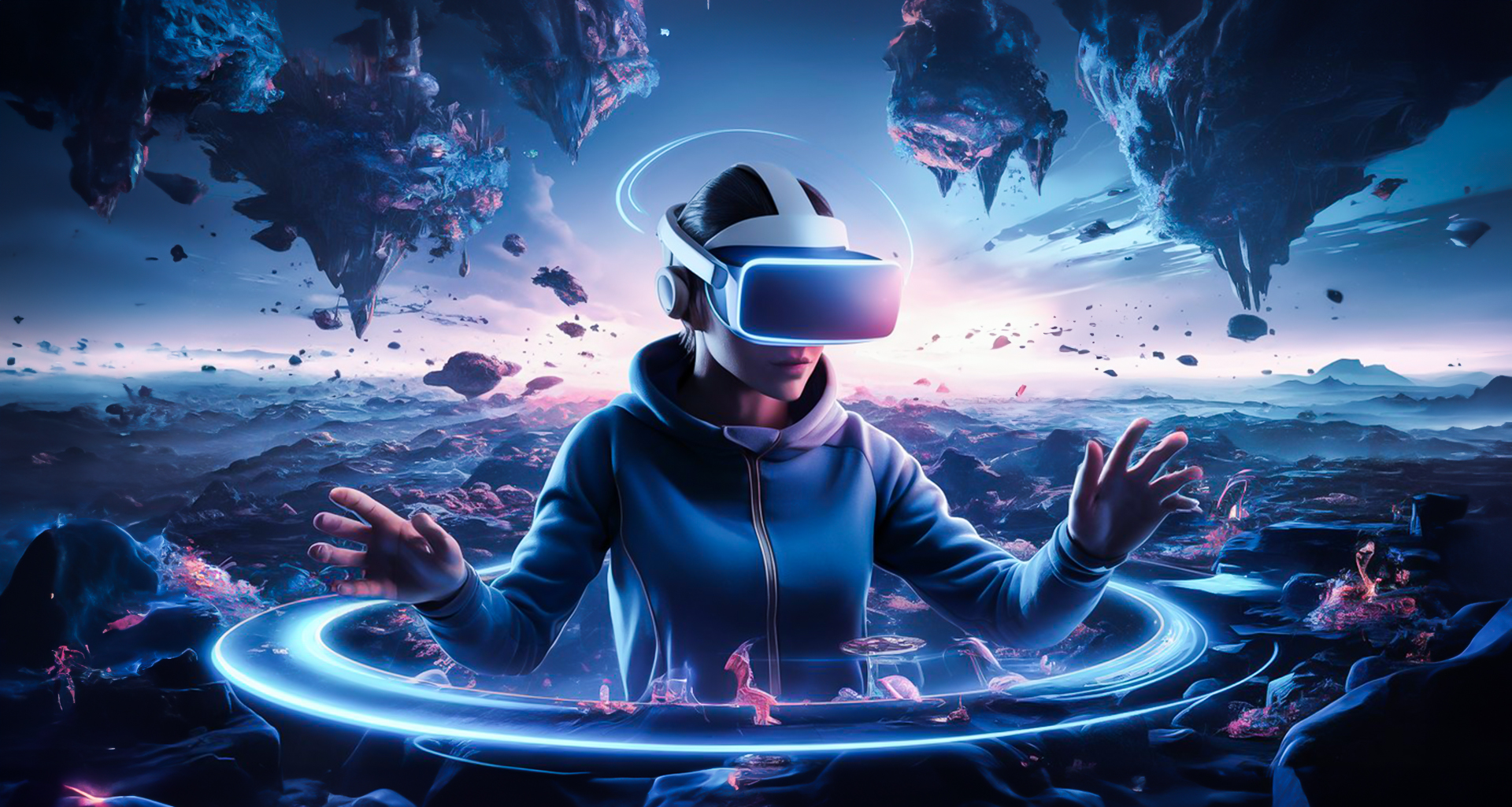The era of Augmented Reality (AR) and Virtual Reality (VR) is here. From furniture retailers letting customers preview sofas in their living rooms to architects conducting virtual walkthroughs, immersive experiences are rapidly becoming the expected standard for commerce, design, and training.
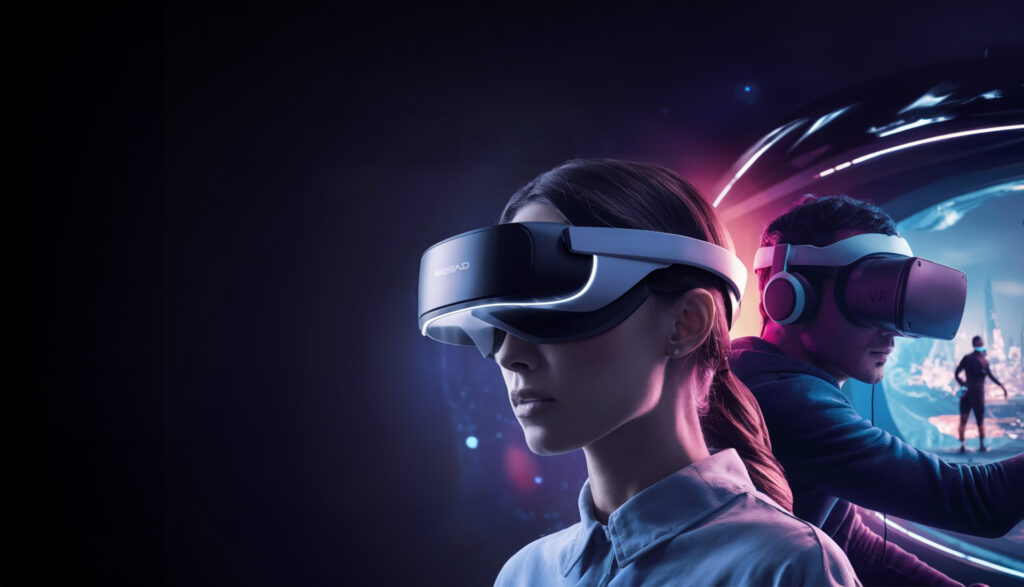
At the heart of every successful AR/VR experience is a meticulously crafted 3D model. Unlike traditional visualization, assets for real-time environments must meet hyper-specific technical constraints related to polycount, file size, and load speed. This demands a unique blend of artistic skill and engineering rigor.
For businesses looking to capitalize on this immersive frontier, Outsource 3D Modeling services is no longer just an option; it’s a strategic necessity. Trying to build an in-house team with the specialized skills required for real-time optimization is costly, slow, and operationally rigid.
This comprehensive guide breaks down the essential technical, operational, and strategic knowledge required to successfully Outsource 3D Modeling for your Augmented Reality – Virtual Reality projects, covering everything from 3D Furniture Modeling to large-scale 3D Architecture visualization.
Part I: The Unique Technical Demands of Augmented Reality – Virtual Reality
The single biggest mistake businesses make is treating an AR/VR model like a traditional 3D Rendering asset. The technical constraints are fundamentally different.
1. The Real-Time Optimization Mandate
AR/VR applications run on devices with limited processing power (smartphones, standalone headsets) and must maintain a high frame rate (typically 60+ FPS) to ensure a smooth, comfortable user experience.
- Polygon Budgeting: This is the most crucial skill provided by Outsource 3D Modeling services. The partner must be expert at aggressive mesh reduction, ensuring a complex object (like a detailed 3D Product Design) is simplified down to a fraction of its original polygons without losing noticeable visual detail.
- LOD (Level of Detail) Creation: For complex scenes, such as full 3D Architecture models, the partner must create multiple LODs for a single asset. This ensures that objects close to the viewer render with high detail, while distant objects use extremely lightweight, low-poly versions, conserving processing power.
- File Size Constraint: Mobile AR viewers often have strict file size limits. The model must be packaged cleanly into formats like GLB (for Android/WebAR) or USDZ (for iOS/Apple ARKit) with minimal overhead.
2. PBR Texturing and Material Integrity
While the geometry must be simple, the materials must look hyper-realistic. This is achieved through specialized Texturing.
- Physically Based Rendering (PBR): The partner must adhere strictly to PBR workflows. This involves creating separate maps (Albedo, Roughness, Metallic, Normal, etc.) that dictate how the virtual surface reacts to light. PBR ensures the asset looks consistently realistic across different devices and lighting environments, a must for believable 3D Rendering in real-time.
- Texture Baking: To retain the fine details of a high-poly sculpt (like scratches, seams, or fine surface imperfections) on the optimized low-poly model, the partner must skillfully “bake” that detail information into the normal maps. This illusion of complexity is what makes an optimized model look high-fidelity.
Part II: Strategic Outsourcing for Key Immersive Workflows
The decision to Outsource 3D Modeling services allows businesses to instantly access the specialization required for their specific vertical.
3. 3D Furniture Modeling for E-commerce (AR Focus)
AR is revolutionizing how consumers shop for bulky items. Outsourcing guarantees the technical precision required for purchase confidence.
- Dimensional Accuracy: The outsourced model for 3D Furniture Modeling must be 1:1 scale accurate. Any discrepancy in size or proportion will lead to customer returns. The partner’s QA process must guarantee millimeter-level dimensional fidelity.
- Configurator Readiness: For modern e-commerce, the model must be modular. The partner should deliver the model with separated, named components (e.g., “Legs,” “Seat Cushion,” “Frame”) and separate material slots, enabling the customer to dynamically change fabric or wood finishes in real-time configurators.
- Visual Trust: High-quality Texturing that accurately conveys the feel of the material (e.g., the sheen of leather or the grain of oak) is vital. Outsourcing ensures this visual trust is achieved for photorealistic 3D Rendering in the AR environment.
4. 3D Architecture and Digital Twins (VR Focus)

For the AEC industry, outsourcing complex 3D Architecture models allows for seamless client collaboration and data visualization.
- BIM Data Conversion: The partner specializes in taking massive, complex BIM/CAD files (often not suitable for real-time) and converting them into lightweight, navigable VR environments. This process involves cleaning up geometry, optimizing hidden meshes, and creating streamlined draw calls for smooth VR walkthroughs.
- Interactive Elements: The 3D Modeling and Design process includes preparing the model for interactivity—tagging doors, windows, and light fixtures so the user can open, close, or switch them on/off within the VR environment.
- Virtual Staging: Outsourcing teams create libraries of optimized 3D Furniture Modeling and decor assets to virtually stage spaces for real estate marketing, saving the huge cost of physical staging.
5. 3D Product Design for Industrial and Retail Applications
From complex machinery to consumer gadgets, AR is used for demonstration, training, and sales.
- Technical Exploded Views: Outsource 3D Modeling services create models that are structurally clean, allowing them to be “exploded” into components within the AR environment to show internal workings or assembly instructions—a critical application for B2B technical sales.
- High-Fidelity Detail: Even with optimization, the 3D Product Design model must retain critical features like logos, screw patterns, and warning labels, which requires precise UV unwrapping and Texturing by the outsourced specialist.
Part III: The Strategic Advantage of Outsource 3D Modeling Services
The choice to outsource is driven by operational necessity—gaining specialization and scalability that internal teams cannot match.
6. Accessing Niche, Expensive Technical Talent
The skills required for real-time optimization are rare, specialized, and highly compensated.
- Technical Artists: An Outsource 3D Modeling services partner provides instant access to technical artists—individuals who bridge the gap between creative design (modeling/texturing) and game engine programming (optimization/integration). This expertise is the most crucial ingredient for successful AR/VR.
- Avoiding High Fixed Costs: Instead of paying the high salaries and benefits for permanent, niche talent, the firm converts this cost into a flexible, project-based expense, paying only for the optimized 3D Rendering assets it receives.
7. Scalability for Catalog Conversion
For retailers, the need to convert an entire product catalog to Augmented Reality – Virtual Reality assets is a massive, high-volume task.
- Mass Production Efficiency: Outsourcing provides the instant, elastic capacity to handle high-volume catalog conversion quickly. The partner can assign a dedicated team to model, texture, and optimize thousands of 3D Furniture Modeling or 3D Product Design SKUs simultaneously, achieving a speed-to-market advantage that an internal team cannot match.
- Workflow Standardization: Outsourced firms specialize in developing and utilizing consistent, repeatable workflows, ensuring every asset meets the same high standard for optimization and Texturing quality.
Part IV: Essential Due Diligence—Selecting the Right Partner
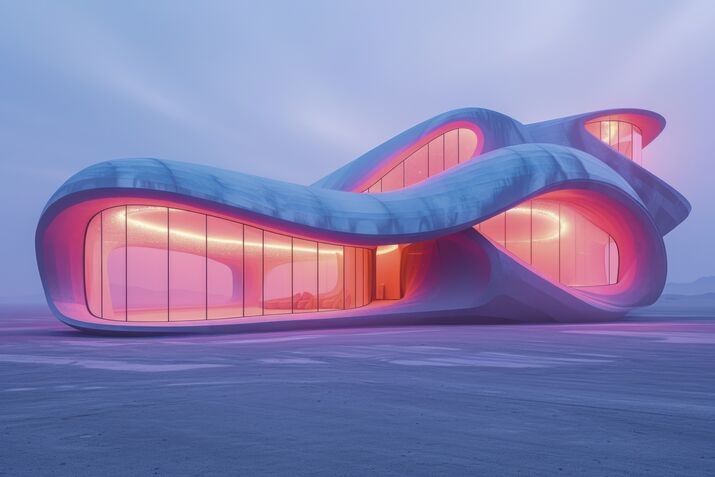
Success in Outsourcing 3D Modeling relies on asking the right technical questions during the selection process.
8. The Technical Vetting Checklist
When evaluating potential partners, focus on their process, not just their final renders.
- Request Wireframes: Do not accept just the finished 3D Rendering. Ask to see the wireframe and UV layout of their sample models. A clean wireframe (optimized topology) is a non-negotiable indicator of real-time expertise.
- Demand Performance Metrics: Ask the partner to provide the polygon count, draw call count, and final file size for a sample AR-ready model. They should be able to instantly provide these metrics validated in an engine like Unity or Unreal.
- Confirm Format Mastery: Ensure they are proficient in exporting and testing the exact file formats your platform requires (e.g., GLB, USDZ, FBX).
9. Defining the Deliverable
A successful partnership requires clarity on the final product specifications.
- Specify Polycount Budget: Clearly define the maximum allowed polygon count for different asset types (e.g., 20,000 tris for a chair, 5,000 tris for a small 3D Product Design).
- Mandate PBR Texturing: Insist on PBR workflows and specify the required texture map resolution (e.g., 2048×2048), ensuring future-proof, versatile assets.
- Provide Reference Material: Supply the outsourcing team with high-resolution photos, physical material swatches, and accurate CAD files for every product to ensure the digital 3D Modeling and Design is dimensionally and visually perfect.
🎯 Conclusion: Mastering the Augmented Reality – Virtual Reality Pipeline
The demand for high-quality, performant Augmented Reality – Virtual Reality content is outpacing the capacity of most in-house teams. The technical gap between marketing 3D Rendering and a lightweight, interactive Augmented Reality – Virtual Reality Model is vast.
For any business, the strategic move to Outsource 3D Modeling services to AR/VR specialists is the most direct and efficient path to success. By focusing on partners who demonstrate mastery in optimization, PBR Texturing, and platform-specific formats (USDZ/GLB), companies can ensure their 3D Architecture, 3D Furniture Modeling, and 3D Product Design ventures not only look realistic but deliver the high-performance, immersive experience that drives customer engagement and market leadership.
❓ Frequently Asked Questions (FAQ)
1. What is the biggest difference between a 3D Rendering model and an AR/VR model?
The biggest difference is optimization. A traditional 3D Rendering model is high-fidelity and slow. An AR/VR model is aggressively optimized (low polygon count, clean topology) to maintain a fast frame rate on mobile devices, which is essential for smooth real-time performance.
2. What is “LOD” and why is it crucial for Augmented Reality – Virtual Reality outsourcing?
LOD stands for Level of Detail. It is crucial because the outsourced team creates multiple versions of a single 3D Modeling and Design asset—high-detail for close views and extremely low-detail for distant views—to save processing power and ensure the AR/VR application runs smoothly.
3. How does Outsource 3D Furniture Modeling help reduce product returns?
It helps by enabling accurate AR visualization. The optimized, 1:1 scale model allows customers to virtually place the furniture in their home using their phone, confirming size, fit, and appearance before purchase, significantly reducing dimensional mismatch returns.
4. What role does Texturing play in the quality of an AR/VR model?
Texturing is vital for realism. AR/VR models use PBR (Physically Based Rendering) Texturing to dictate how surfaces react to virtual light. This ensures high visual fidelity and photorealism without the massive polygon count of traditional 3D Rendering.
5. Why is a clean wireframe a key indicator when selecting an Outsource 3D Modeling services partner?
A clean wireframe (optimized, quad-based geometry) indicates the partner’s mastery of technical optimization. A messy wireframe will cause performance issues, slow loading times, and errors when integrating the model into a real-time Augmented Reality – Virtual Reality engine.
6. Can an Outsource 3D Modeling services partner handle my 3D Architecture CAD files for VR?
Yes, a specialized partner can take complex 3D Architecture CAD files, clean the geometry, optimize the mesh, and convert the massive file into a lightweight, navigable, and interactive VR environment suitable for client walkthroughs and presentations.
